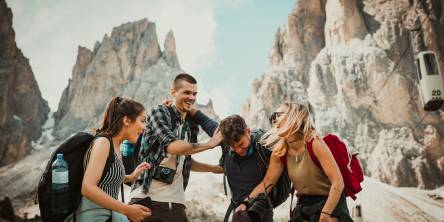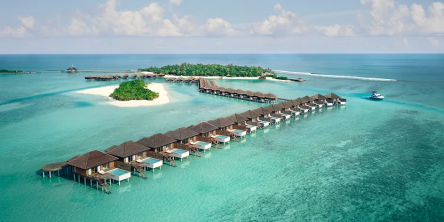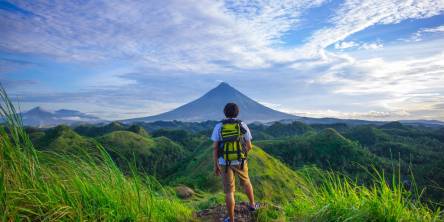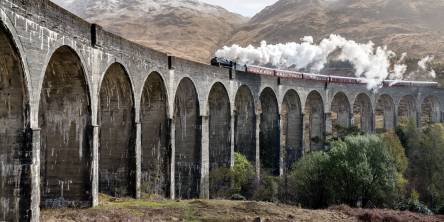Island of Giannutri (Italy), Ecotourism in the Heart of the Tyrrhenian Sea
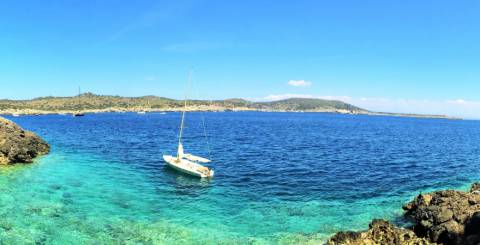
The small island of Giannutri, only 2.8 km long and just a few hundred meters wide, is the southernmost of the Tuscan Archipelago in the Tyrrhenian Sea (Italy). Just a few miles from the Argentario promontory and the most famous Giglio Island, Giannutri contains a largely uncontaminated environment, characterized by a luxuriant and colorful shrubby vegetation (mainly junipers, lentisks and strawberry trees) mixed with wooded areas composed of pines and oaks. Its isolation has also allowed the development of native plant species not available elsewhere (such as Limonium Sommierianum), a circumstance that has made the island particularly appreciated by botanists and more generally by lovers of nature hikes. But the true wealth of Giannutri hides in the crystalline waters that bathe its rocky coasts: the submerged rocks, interspersed with vast prairies of oceanic posidonia shaken by the currents, as well as the fascinating ancient and modern wrecks lying on the seabed all around the island, are populated by a multitude of fish and mollusks. A real attraction for snorkelling and diving enthusiasts who since decades frequent Giannutri not only during the summer season.
In order to preserve its extraordinary naturalistic aspects in 1996 the island was included in the Tuscan Archipelago National Park and since then it is bound to strict rules that limit but do not hinder tourist presence, creating a perfect balance between the need for protection and appreciation of its natural beauties. A real Italian symbol of the ecotourism.
Archeology in Giannutri
The island hides important remains of the Roman past: near Punta Scaletta, in the northern part of Giannutri, you can visit the ruins of a splendid Roman villa on terraces overlooking the sea. The residential part is concentrated around the exastyle atrium that preserves columns, capitals, and fragments of the marble decoration of the walls. Not far away there are a thermal bath, cisterns, and accommodation for slaves. Further downstream, at Cala Maestra, you can clearly see the walls of a large depot for the owner's boats, the remains of the base of a winch for loading and unloading the goods and, hidden among the vegetation, other cisterns, and a fish farming plant. Further Roman remains are in Cala Spalmatoio, where the entire inlet is marked by the cut of the cliff operated by the Romans to turn the cove into a small port for fishing boats and to repair boats in transit in the Tyrrhenian Sea. All the ruins are dated between the end of the first century AD and the middle of the next century, when the island, already owned by the Domitii Ahenobarbi (Emperor Nero's birth family), had to enter the private patrimony of the Roman emperors.
How to visit Giannutri: rules and tips
Despite the limited size, the island is not uninhabited. At Cala Spalmatoio, Giannutri's main landing point, in the 1960s a charming tourist village was built, characterized by terraced houses with elegant flower gardens and a small square in Capri style, overlooked by some commercial establishments. Other villas are more inland, hidden in the vegetation and often placed in a panoramic position. Those wishing to stay on the island can therefore easily find accommodations in the village or in villas. The Park Authority reserves the right of owners, their guests and renters to move freely along the paths of the island to explore every part of it. Far more limited is the possibility of movement guaranteed to occasional visitors, mostly hikers who daily, in the summer, arrive at Giannutri from Giglio and other tourist resorts in the area thanks to mini-cruises: these can, in fact, go on foot (even with their pets) only in the central corridor that connects Cala Spalmatoio and Cala Maestra, the two main coves of the island as well as the only ones that house pebble and sand beaches; to visit the remaining part of Giannutri, however, you can book the nature guides service managed by the National Park. Prohibitions for all exist in some marine areas around the island: the waters at the northern and southern ends of Giannutri have been declared as in full protection and therefore bathing, fishing and boat transit are prohibited; a system of cameras controls the respect of these bans while the coastguard and the carabinieri impose strong fines on the transgressors. On the whole island, there is a ban on camping and lighting fires, collecting vegetation and disturbing the animals (Giannutri is populated by a large number of wild rabbits and by numerous species of birds that come to nest on its cliffs).
The Giannutri Island is easily reached by ferries that leave from Porto Santo Stefano (Argentario promontory) all over the year and more frequently during the summer. On the island, it is not possible to disembark unauthorized motor vehicles. The best times to visit the island are in the spring and, of course, in the summer, when the silence is occasionally broken by visitors: an ideal destination for those looking for a holiday of nature, sea, and relaxation, far away from the destinations frequented by mass tourism.
Similar Articles
A cabin retreat is always exciting, especially when one is planning for a break from the world and wants to spend some quiet and alone time in a secluded, natural environment. For whichever purpose—it may be a weekend getaway or a long vacation—the trip can be made more special by identifying the right cabin rental.
During travel season, tourists are often scammed by old and new tricks, but if you stay informed, you can avoid falling victim to most of the scams.
Embarking on a journey to explore new destinations is more than just a simple act of movement from one place to another; it's an exhilarating plunge into the unknown, a canvas awaiting the strokes of your adventurous spirit.
Embarking on a long-term travel adventure or living can truly enrich your life. Bring about transformative experiences. However, it's crucial to approach it with planning, adaptability and the courage to venture outside of your comfort zone. In this guide, we'll delve into aspects of long-term travel and living abroad offering advice to assist you in embarking on this thrilling journey.
If you and your soulmate have finally decided to make your relationship official, your thoughts will be focusing on a honeymoon destination, among other things. Of course, the big focus is the wedding, which can be a real challenge, even for a professional event planner, and once you book your honeymoon, that’s one thing you can cross off your list of stuff to do.
When it comes to traveling to and from Frankfurt Airport, there are several transportation options available, each with its own advantages and considerations.
Finding the right vacation rental for your needs and goals takes a little planning. Here are 6 things to look for when choosing and planning the perfect vacation rental destination.
Travelling in today’s world can get quite hectic, messy, and fast. However, to truly take in the experience of going to another country, we need to take a step back and see what it’s like to travel more slowly, purposefully, and selectively for a much better travelling experience.
Scotland is a beautiful country with countless wonders to offer locals and tourists alike. Whether you’re a fellow Scot looking to explore somewhere new in your home country, or you’re a tourist looking to see what Scotland has to offer – there’s something for everyone.



